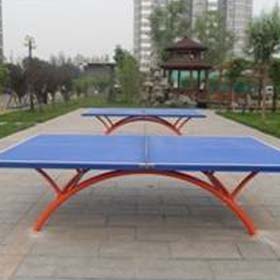The Manufacturing Process of a Table Tennis Table Using Table Tennis Table Mould
2024-07-08
Introduction
The production of a table tennis table involves several meticulous steps, with the "Table Tennis Table Mould" playing a central role. Understanding the manufacturing process can provide insights into the importance of each stage and how the mould contributes to the final product. In this blog, we will explore the manufacturing process of a table tennis table, highlighting the crucial role of the table mould.
1. Design and Engineering
The manufacturing process begins with the design and engineering phase. Engineers create detailed plans and specifications for the table tennis table, including dimensions, surface texture, and structural integrity. The design must adhere to standards set by governing bodies like the ITTF. The table tennis table mould is designed based on these specifications to ensure precise replication during production.
2. Mould Fabrication
Once the design is finalized, the fabrication of the table tennis table mould begins. This involves creating a mould that can accurately reproduce the desired table dimensions and surface characteristics. The mould is typically made from high-quality materials like steel or aluminum, chosen for their durability and ability to withstand high pressure and temperature conditions during the manufacturing process.
3. Material Preparation
The next step involves preparing the materials used to construct the table. Common materials include medium-density fiberboard (MDF) for the table surface and steel or aluminum for the frame. The materials are carefully selected and treated to ensure they meet the required standards for strength, durability, and playability.
4. Moulding Process
The core of the manufacturing process is the moulding stage. The prepared materials are placed into the table tennis table mould, where they are subjected to high pressure and temperature to form the table's shape. The precision of the mould ensures that the table dimensions are accurate and that the surface is smooth and even. This step is critical in achieving the desired playing characteristics of the table.
5. Assembly and Finishing
After the moulding process, the table components are assembled. The table surface is attached to the frame, and any additional features, such as net posts and corner protectors, are added. The table is then finished with coatings or treatments to enhance its durability and appearance. Quality control checks are performed to ensure that the table meets all specifications and standards.
6. Testing and Quality Assurance
The final step in the manufacturing process is testing and quality assurance. Each table is tested for surface flatness, ball bounce consistency, and structural integrity. Any defects or deviations from the standards are addressed before the table is approved for sale. The table tennis table mould's precision plays a significant role in ensuring that the final product meets the highest quality standards.
Conclusion
The manufacturing process of a table tennis table involves several critical steps, with the table tennis table mould being a key component. From design and engineering to material preparation, moulding, assembly, and testing, each stage relies on the precision and quality of the mould. Understanding this process highlights the importance of investing in high-quality table tennis table moulds to produce top-tier tables that meet the demands of players and governing bodies alike.



